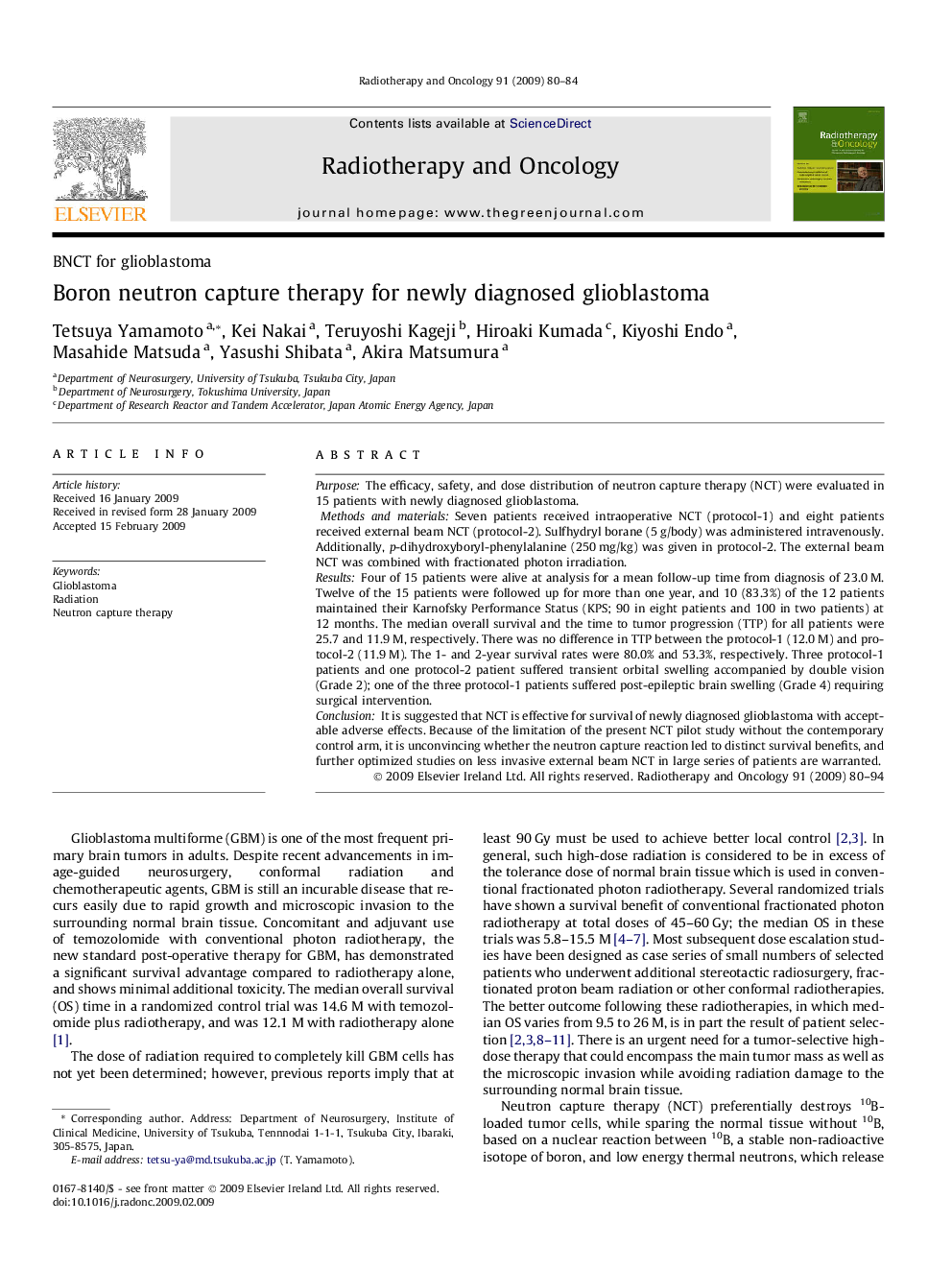| Article ID | Journal | Published Year | Pages | File Type |
|---|---|---|---|---|
| 2159439 | Radiotherapy and Oncology | 2009 | 5 Pages |
PurposeThe efficacy, safety, and dose distribution of neutron capture therapy (NCT) were evaluated in 15 patients with newly diagnosed glioblastoma.Methods and materialsSeven patients received intraoperative NCT (protocol-1) and eight patients received external beam NCT (protocol-2). Sulfhydryl borane (5 g/body) was administered intravenously. Additionally, p-dihydroxyboryl-phenylalanine (250 mg/kg) was given in protocol-2. The external beam NCT was combined with fractionated photon irradiation.ResultsFour of 15 patients were alive at analysis for a mean follow-up time from diagnosis of 23.0 M. Twelve of the 15 patients were followed up for more than one year, and 10 (83.3%) of the 12 patients maintained their Karnofsky Performance Status (KPS; 90 in eight patients and 100 in two patients) at 12 months. The median overall survival and the time to tumor progression (TTP) for all patients were 25.7 and 11.9 M, respectively. There was no difference in TTP between the protocol-1 (12.0 M) and protocol-2 (11.9 M). The 1- and 2-year survival rates were 80.0% and 53.3%, respectively. Three protocol-1 patients and one protocol-2 patient suffered transient orbital swelling accompanied by double vision (Grade 2); one of the three protocol-1 patients suffered post-epileptic brain swelling (Grade 4) requiring surgical intervention.ConclusionIt is suggested that NCT is effective for survival of newly diagnosed glioblastoma with acceptable adverse effects. Because of the limitation of the present NCT pilot study without the contemporary control arm, it is unconvincing whether the neutron capture reaction led to distinct survival benefits, and further optimized studies on less invasive external beam NCT in large series of patients are warranted.
